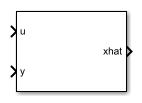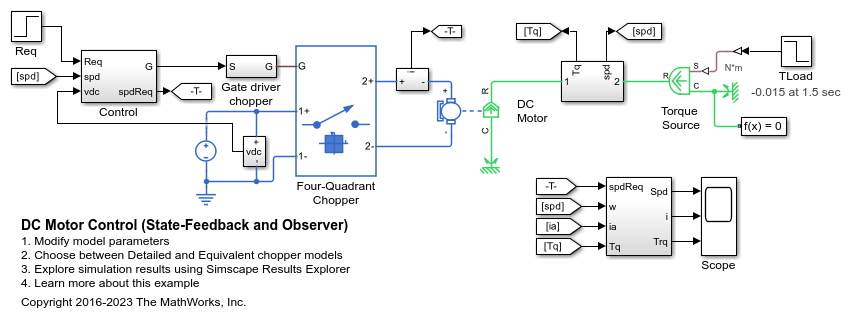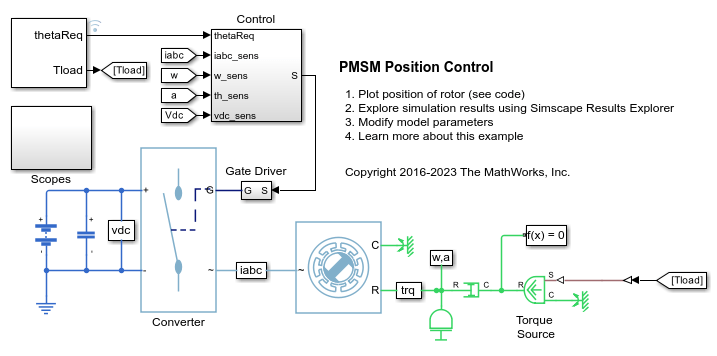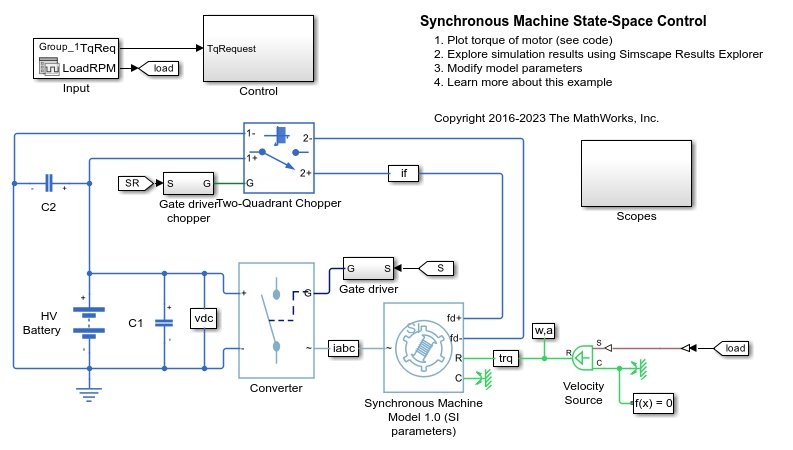Luenberger Observer
Discrete-time Luenberger observer
Libraries:
Simscape /
Electrical /
Control /
Observers
Description
The Luenberger Observer block implements a discrete time Luenberger observer. Use this block to estimate the states of an observable system using:
The discrete inputs and outputs of the system.
A discrete state-space representation of the system.
The Luenberger Observer is also sometimes referred to as a state observer or simply an observer.
You can control multi-input, multi-output systems by passing the output state vector of this block to a State Feedback Controller block.
Defining Equations
The block implements a discrete time Luenberger Observer using the backward Euler method due to its simplicity and stability.
The estimator is given by this difference equation:
where:
is the kth estimated state vector.
is the kth estimated output vector.
u(k) is the kth input vector.
y(k) is the kth measured output vector.
Ad is the discretized state matrix.
Bd is the discretized input matrix.
Ld is the discretized observer gain matrix.
The dynamics of the estimation error are described by:
where:
e(k) is the kth error vector.
Cd is the output matrix.
The estimation error converges to zero when Ad-LdCd has its eigenvalues inside the unit circle. Therefore, the value of Ld should be such that this goal is achieved. The block computes the observer gain by solving
where G is an arbitrary matrix and X is obtained by solving the Sylvester equation:
Here, Λ is a matrix with the desired eigenvalues, which are not the same as the eigenvalues of Ad. This diagram shows the basic structure of a discrete time Luenberger Observer.
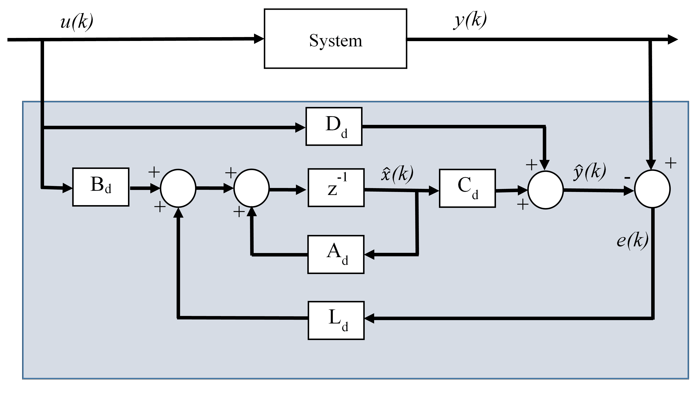
Assumptions
The system is observable, which is true if the state of the system can be determined from the input and output in a finite time. Mathematically, this means that the system observability matrix has full rank.
Limitations
The desired eigenvalues are not the same as the eigenvalues of the open-loop model.
Examples
Ports
Input
Output
Parameters
References
[1] Luenberger, D. G. "An Introduction to Observers." IEEE Transactions on Automatic Control. Vol. 16, Number 6, 1971, pp. 596-602.
[2] Alessandri, A., and P. Coletta. "Design of Luenberger observers for a class of hybrid linear systems." In International Workshop on Hybrid Systems: Computation and Control, Berlin, March 2001.
[3] Varga, A. "Robust pole assignment via Sylvester equation based state feedback parametrization." In Computer-Aided Control System Design, pp. 13-18., Anchorage, Alaska, 2000.
Extended Capabilities
Version History
Introduced in R2017b
